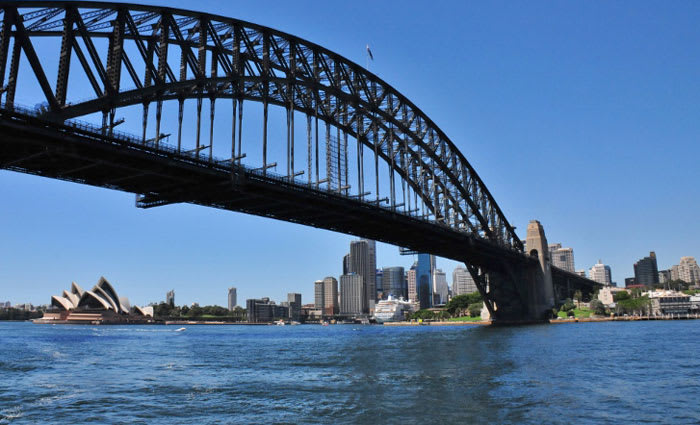Sydney unit price growth forecast to be flat: QBE Housing Outlook
Median house prices in Sydney began to escalate at the end of 2012 as successive cuts to interest rates and the underlying dwelling deficiency firmly in place released pent up demand into the market, according to QBE's latest housing report.
Sydney’s median house price experienced a considerable increase totalling 58% over the four years to June 2016 to be $1,047,600.
Purchaser demand was initially boosted by improved affordability as variable rates fell below 6.5% in 2012 keeping the ratio of mortgage repayments on a median priced house to just over 31% of average household income, which initiated the upturn before further interest rate cuts fuelled stronger price growth through 2013.
The return of solid price growth drove more investors into the market. At the same time, a strong recovery in the New South Wales economy, attracted surging overseas migration and a record low interstate outflow, which in turn caused Sydney’s dwelling deficiency to escalate.
As prices rose, the next wave of demand was driven by investor buyers attracted by price growth and attractive yields in light of the falling interest rates. The value of residential investor loans in New South Wales surged 153% in the three years to 2014/15. In comparison, the number of loans to owner occupiers were 9% higher in the same period.

Median house price growth peaked at 24.4% per annum over 2014/15 but has since slowed considerably, estimated to have declined by a marginal 0.4% in the year to June 2016. Investor finance is now contracting after banks tightened access to credit and increased interest rates for investor loans in 2015.
Loans to investors began to fall dramatically in December quarter 2015, being 22% down on the corresponding period a year earlier, while the total annual decline of loans to investors in 2015/16 was 17%. Over the twelve months to June 2016, median house prices in inner and middle Sydney (where prices are significantly higher) were in decline while outer Sydney maintained growth of 3.9%.
This correction, largely driven by the impact of regulatory changes targeted at investor buyers, is in contrast to the strong fundamentals in the house market.
Vacancy rates continue to remain tight at 1.8% in June 2016 while underlying demand is forecast to remain strong due to strong population growth from solid net overseas migration and low net interstate migration.
With investors making room in the market, loans to owner occupiers have accelerated, recording an 11% rise in 2015/16.
This is expected to somewhat offset further expected weakness in investor loans, with Sydney’s median house price forecast to see further price growth of 1.7% in 2016/17 to be $1,065,000 at June 2017.
However, the growing impetus from owner occupiers is likely to slow. New dwelling supply began to exceed demand in 2015/16, with Sydney’s underlying dwelling deficiency finally beginning to ease.
Further expected falls in the deficiency through to 2018/19 is expected to continue to ease pressure on prices.
Together with continued weakening investor demand, this is expected to precipitate a fall in Sydney’s median house price.
Low interest rates should prevent any major flood of forced sales onto the market to drive down prices significantly, with a forecast fall in the standard variable rate to below 5% in 2017/18 also providing some support.
Sydney’s median house price is forecast to pull back to $1,055,000 by June 2018 and $1,050,000 by June 2019, resulting in median house price growth being effectively flat by the end of the forecast period.
New South Wales is the only state that is forecast to maintain its underlying dwelling deficiency through to 2019 despite record levels of dwelling completions coming through. Strong population growth has supported rising underlying demand while the low interest rate environment has supported affordability.

Tight vacancy rates and limited rental growth are expected to continue to drive investor demand. Moreover, compared to many other capital cities, aggregate new dwelling supply in Sydney has been characterised by a proportionate increase in both new house and unit supply. As a result, both house and unit markets are likely to remain in deficiency over the forecast period.
Price growth in the Sydney unit market has been below that of the house market. Sydney’s median unit price rose by an estimated 41% in the four years to June 2016. However, price growth has already started to flatten with the median unit price growing by just 3% in 2015/16.
Slowing rental growth and falling yields as well as changes to the regulatory landscape have impacted investor demand. Investors are more prevalent in the unit market than the detached house market and it is expected that the larger falls expected in investor demand mean the unit market will have greater downside in price than the house market over the forecast period.
With higher interest rates and lower loan–to–value ratios for investor lending, capacity for investors to enter the market or pay higher prices is being curtailed. Similarly, the new level of apartment construction taking place may have an impact on vacancy rates and rental growth as the dwelling deficiency is slowly eroded.
Sydney’s median unit price growth is forecast to fall 1.8% in 2016/17 and cumulatively by 6.8% over the three years to June 2019 to a median unit price of $680,000.
